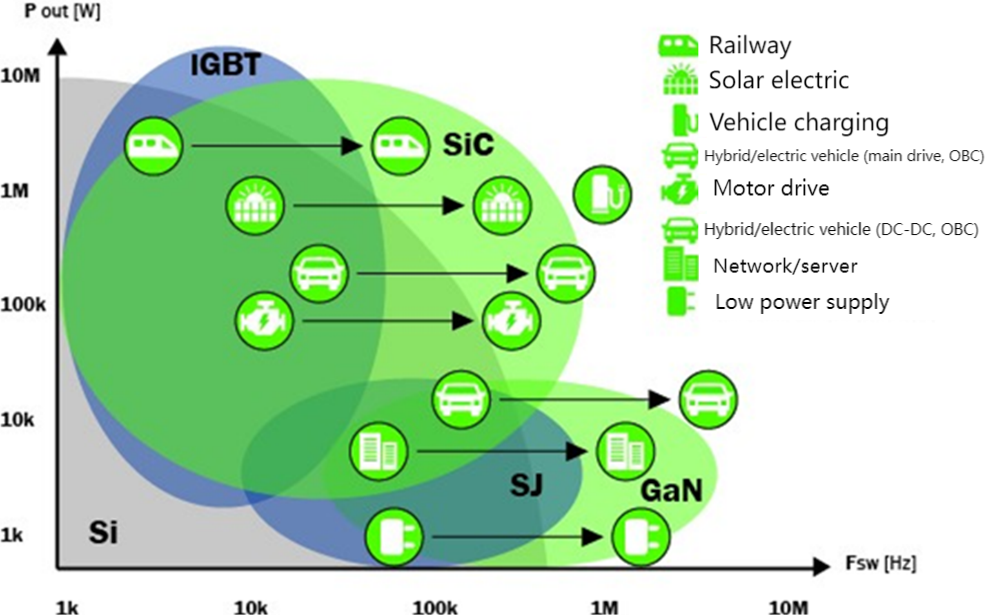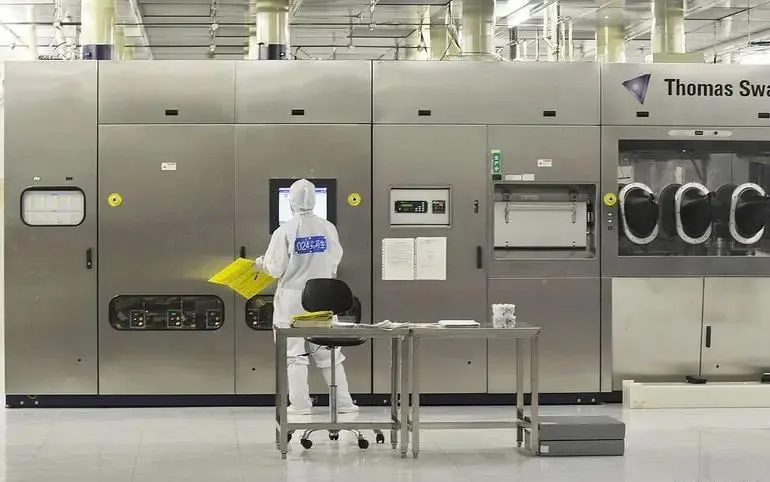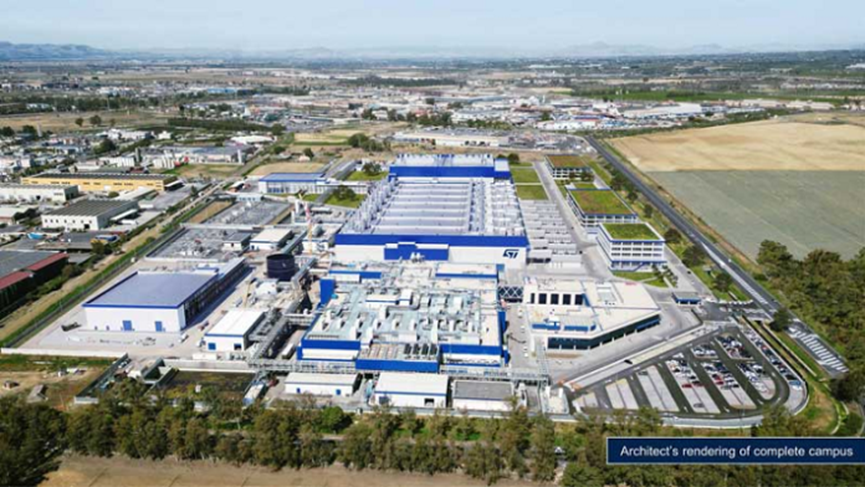What is the difference between gallium nitride (GaN) and silicon carbide (SiC)?
Silicon has dominated the transistor world for decades. But that is changing. Compound semiconductors consisting of two or three materials have been developed that offer unique advantages and superior properties. For example, with compound semiconductors, we developed light-emitting diodes (leds). One type is composed of gallium arsenide (GaAs) and gallium phosphorus arsenide (GaAsP). Others use indium and phosphorus. The problem is, compound semiconductors are harder to make and more expensive. However, they have significant advantages over silicon. New and more demanding applications, such as automotive electrical systems and electric vehicles (EVs), are finding that compound semiconductors better meet their stringent specifications.
Two compound semiconductor devices, gallium nitride (GaN) and silicon carbide (SiC) power transistors, have emerged as schemes. These devices compete with long-life silicon power transversally diffused metal-oxide semiconductor (LDMOS) MOSFETs and super-junction MOSFETs. GaN and SiC devices are similar in some respects, but there are also significant differences. This article compares the two and provides some examples to help you decide on your next design.

Wide bandgap semiconductor
Compound semiconductors are known as wide band gap (WBG) devices. Leaving aside lattice structures, energy levels, and other head-scratching semiconductor physics, let's just say that the definition of WBG is a model that attempts to describe how current (electrons) flow in a compound semiconductor. WBG compound semiconductors have higher electron mobility and higher bandgap energy, translating to properties superior to silicon. Transistors made of WBG compound semiconductors have a higher breakdown voltage and tolerance to high temperatures. These devices offer advantages over silicon in high voltage and high power applications.
WBG transistors also switch faster than silicon, allowing them to operate at higher frequencies. Lower "on" resistance means they dissipate less power, improving energy efficiency. This unique combination of features makes these devices attractive for some of the most demanding circuits in automotive applications, especially hybrid and electric vehicles. GaN and SiC transistors are becoming readily available to meet the challenges of automotive electrical equipment.
The main selling points of GaN and SiC devices are these advantages:
High voltage capability, available in 650 V, 900 V and 1200 V devices.
Faster switching speed.
Higher operating temperature.
Lower on-resistance, minimum power dissipation and higher energy efficiency.
GaN transistors
In the field of radio frequency (RF) power, GaN transistors were found to have early business opportunities. The nature of the material allowed the development of depletion mode field-effect transistors (FETs). Depletion type (or D-type) FETs, known as pseudostate high electron mobility transistors (PHEMTs), are naturally "on-going" devices; Since there is no gate control input, there is a natural conduction channel. The gate input signal controls the channel turn-on, turn-on and turn-off of the device.
Since in switching applications, usually "off" enhanced (or E-type) devices are preferred, this has led to the development of E-type GaN devices. The first is a cascade of two FET devices (Figure 2). Now, standard E-type GaN devices are available. They can be switched on and off at frequencies up to 10 megahertz, with power of tens of kilowatts.
GaN devices are widely used in wireless devices as power amplifiers with frequencies up to 100 GHz. Some of the main use cases are cellular base station power amplifiers, military radar, satellite transmitters, and general-purpose RF amplification. However, due to high voltage (up to 1,000V), high temperature and fast switching, they are also incorporated into various switching power applications such as DC-DC converters, inverters and battery chargers.
SiC transistors
SiC transistors are natural E-type MOSFETs. These devices can switch at frequencies up to 1 MHz, with voltage and current levels much higher than silicon MOSFETs. The maximum drain-source voltage is up to about 1,800 V and the current capacity is 100 amps. In addition, SiC devices have much lower on-resistance than silicon MOSFETs, making them more energy efficient in all switching power supply applications (SMPS designs). A key drawback is that they require a higher gate drive voltage than other MOSFETs, but with improvements in design, this is no longer a drawback.
SiC devices require gate voltages of 18 to 20 volts to drive through devices with low on-resistance. Standard Si MOSFETs require less than 10 volts of gate to be fully conductive. In addition, SiC devices require a -3 to -5 V gate drive to switch to the off state. However, dedicated gate driver ics have been developed to meet this need. SiC MOSFETs are generally more expensive than other alternatives, but their high voltage, high current capabilities make them well suited for use in automotive power circuits.
Competition for WBG transistors
Both GaN and SiC devices compete with other mature semiconductors, especially silicon LDMOS MOSFETs, super junction MOSFETs, and IGBTs. In many applications, these older devices are gradually being replaced by GaN and SiC transistors. For example, IGBTs are being replaced by SiC devices in many applications. SiC devices can be switched on and off at higher frequencies (100 KHZ + vs. 20 KHZ), allowing the size and cost of any inductor or transformer to be reduced while improving energy efficiency. In addition, SiC can handle much larger currents than GaN.
To summarize the comparison between GaN and SiC, here are the highlights:
GaN switches faster than Si.
SiC has a higher operating voltage than GaN.
SiC requires a high gate drive voltage.
Superjunction MOSFETs are gradually being replaced by GaN and SiC. SiC seems to be a favorite for in-car chargers (OBCs). This trend will no doubt continue as engineers discover newer devices and gain experience using them.
Automotive Applications
Many power circuits and devices for automotive applications can be improved by GaN and SiC design. One of the biggest beneficiaries is automotive electrical systems. Modern hybrid and pure electric vehicles contain devices that can use these devices. Some of these popular applications are OBC, DC-DC converters, motor drivers, and laser radar (LiDAR).
DC-DC converter. This is a power supply circuit that converts a high battery voltage into a lower voltage to run other electrical equipment. The current battery voltage range is as high as 600 or 900 volts. The DC-DC converter reduces it to either 48 volts or 12 volts, or both, for the operation of other electronic components. In hybrid electric vehicles and electric vehicles (HEVEVs), DC-DC can also be used as a high-voltage bus between the battery pack and the inverter.
Car Charger (OBCs). Plug-in HEVEVs and EVs include an internal battery charger that can be connected to an AC power supply. This allows charging at home without the need for an external AC− DC charger .
Main drive motor driver. The main drive motor is a high-output AC motor that drives the wheels of the vehicle. The driver is an inverter that converts battery voltage into three-phase alternating current to make the motor run.
LiDAR. LiDAR refers to a technology that combines light and radar methods to detect and identify surrounding objects. It scans a 360-degree area with a pulsed infrared laser and detects the reflected light. This information is translated into detailed three-dimensional images at a range of about 300 meters, with a resolution of a few centimeters. Its high resolution makes it an ideal sensor for vehicles, especially autonomous driving, to improve the recognition of nearby objects. LiDAR devices operate in the DC voltage range of 12-24 volts, which is derived from a DC-DC converter. Because GaN and SiC transistors are characterized by high voltage, high current, and fast switching, they provide automotive electrical designers with flexible and simpler designs and superior performance.
FOUNTYL TECHNOLOGIES PTE. LTD. is a modern enterprise in the field of advanced ceramics set R&D, manufacturing and sales as one, mainly produces porous ceramics, alumina, zirconia, silicon nitride, silicon carbide, aluminum nitride, microwave dielectric ceramics and other advanced ceramic materials. our specially invited Japanese technology expert have more than 30 years of industry experience in semiconductor field, efficiently provide special ceramic application solutions with wear resistance, corrosion resistance, high temperature resistance, high thermal conductivity, insulation for domestic and foreign customers.












